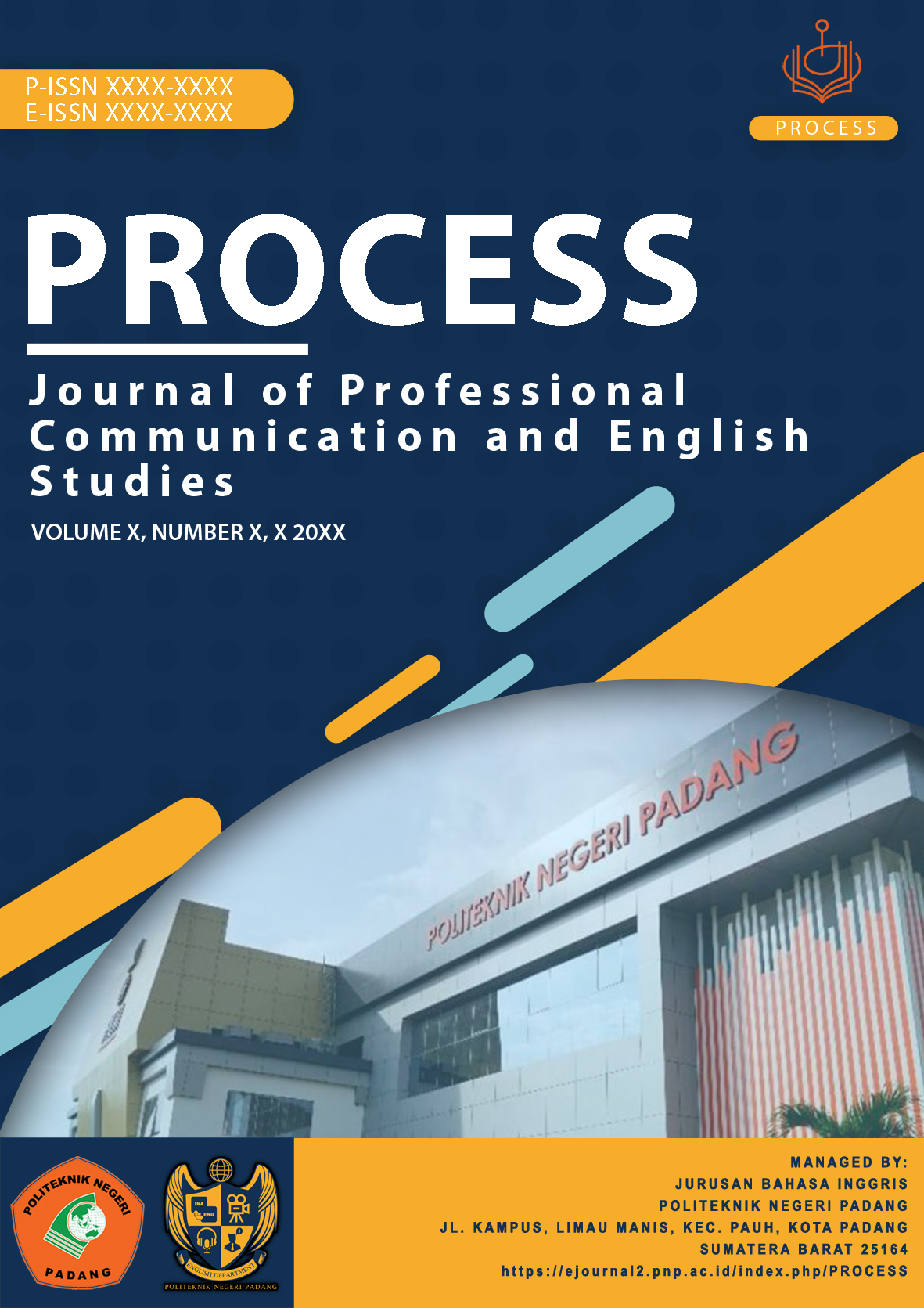Decoding Digital Humor: An Analysis of the CSPC Shitposting’s Facebook Page through the Lens of the Gricean Maxims
Abstract
The relevance of meme culture in todays generation together with the advancement of technology has transformed communication. Humor which represents expression and triggers emotional response appeals to the amusing quality of utterances. In real-life context, speakers often intentionally violate maxims to express their thoughts in unique ways to evoke laughter and arouse certain effects. This paper explores how the comments of Facebook users in a humorous post in the CSPC Shitposting Facebook page creates meaning and analyzes what Gricean maxims were frequently violated. The paper also aims to investigate how memes are perceived on digital platforms, providing deeper analysis of these utterances. The study was conducted using a qualitative discourse analysis research method to analyze the language used and, identify the flouted maxims. Following the study, the researchers discovered that when people use language to make humor, they typically violate the maxims of quantity and quality garnering a percentage of 31.57%, which undermines the language's impact. This offers a logical response to the question of how humans employ figures of speech, such as hyperbole, to produce hilarious statements. Furthermore, the researchers found out that Filipinos use a variety of different humor styles containing messages in a concealed manner, rather than being straightforward. Filipino online communication style is a mixed language of English and the local language, Taglish, where the use of slangs and abbreviations are evident. This underscores the intricacies of the usage of humor in language where violating Grices maxim becomes a linguistic tool rather than a communicative flaw.
References
Alawiyyah, A., Gunawan, W., & Dallyono, R. (2020). Humor Functions and Flouting of conversational maxims: A case study of humor in Indonesian academic lectures. Passage, 8(3), 123. https://doi.org/10.17509/psg.v8i3
Aporbo, R. (2024). Exploring Gricean maxims in Facebook conversations through the lens of Gen-Z users: A pragmatic analysis. www.academia.edu. https://www.academia.edu/92195726/Exploring_Gricean_maxims_in_Facebook_conversations_through_the_lens_of_Gen_Z_users_A_pragmatic_analysis
Ashraf, S. (2023, March 2). Digital Communication: what it is and where its headed. Airalo. https://www.airalo.com/blog/digital-communication-what-it-is-and-where-its-headed?srsltid=AfmBOorqnCrV2V8d86REMsYsQuC9kMgun2WvmjWCU1wcz3H59xrhpNsp
Askildson, L. (2005, December 31). Effects of humor in the language classroom: humor as a pedagogical tool in theory and practice. The Journal of Second Language Acquisition and Teaching (JSLAT). https://journals.librarypublishing.arizona.edu/jslat/article/id/201/
Ayunon, C. (2018). Gricean Maxims revisited in FB conversation posts: Its pedagogical implications. https://www.semanticscholar.org/paper/Gricean-Maxims-Revisited-in-FB-Conversation-Posts%3A-Ayunon/9616c0a172cb6a0d44ef31df8d398caced6f6e21
Ayunon, K. (2018). Pedagogical implications of Gricean maxims on Facebook posts
conversations: A Gricean perspective.
Betti, M. J. (2021). Grices Maxims. Linguistics. https://doi.org/10.13140/RG.2.2.12486.60487
Bonalumi, F., B. Mar, J., Marie, P., & Pouscoulous, N. (2023). Beyond the Implicit/Explicit dichotomy: the pragmatics of plausible deniability. Review of Philosophy and Psychology, 3. https://link.springer.com/article/10.1007/s13164-023-00699-5#
Budiana, A. A., Ristra, P., Sukma, D., & Satria, A. (2023). An Analysis of Humor of Students Chitchat Page on Facebook within Cooperative Principle Framework: A Case Study on the Students Group Page. INOVISH JOURNAL, 8(1), 1. https://doi.org/10.35314/inovish.v8i1.3289
Conversational Maxims: Definition & Examples |. (n.d.). StudySmarter UK. https://www.studysmarter.co.uk/explanations/english/pragmatics/grices-conversational-maxims/
Chantraine, Y., Joanette, Y., & Cardebat, D. (1998). Impairments of disourse-Level representations and processes. Handbook of Neurolinguistics, 261274. https://doi.org/10.1016/B978-012666055-5/50021-6
De Matta, S. M. S., Ibaite, X. A., Revistual, N. a. S., & Fajardo, D. F. (2023). Effects of TikTok english teaching videos in the second language acquisition of elementary learners. DIALEKTIKA JURNAL BAHASA SASTRA DAN BUDAYA, 10(2), 91112. https://doi.org/10.33541/dia.v10i2.5391
Davis, W. (2024). Implicature. Stanford Encyclopedia of Philosophy. Library of Congress
Catalog Data: USA.
Dogcol, R., & Villanueva, V. (2024). Examining online news: A Gricean maxim analysis of news outlet Facebook pages. International Journal of Language and Education Research, 6(2), 3560. https://doi.org/10.29329/ijler.2024.1059.3
Dynel, M. (2013). Pragmatics of humorous communication in social media. Journal of Pragmatics, 55, 18.
Fajardo, D. F., Oliveros, N., Ibarbia, J. L., Derecho, D., & Pesebre, R. (2023). COMPARATIVE STYLISTIC ANALYSIS OF SELECTED BAETA'S RINCONADA POEM AND ITS ENGLISH TRANSLATION. Journal of English Education and Linguistics, 4(2), 90-104.
Fitriani, J. (2019). An Analysis of the Cooperative Principle in EFL Discussions. Educational Research Methods: New Delhi, India.
Fitria, A. A., & Rohmah, Z. (2022). Spreading laughter Through humor from Gricean Maxims and Islamic perspectives. LiNGUA, 17(1), 4962. https://doi.org/10.18860/ling.v17i1.15580
FUBARA, S. J. (2020). A pragmatic analysis of the discourse of humor and irony in selected memes on social media. International Journal of Language and Literary Studies, 2(2), 76-95.
Galti, A. et al., (2022). Contributions of Gricean Maxims in the Understanding of Meaning: A Review. Department of English and Literary Studies. Borno State University: Nigeria.
Hassan, M. (2024, March 26). Discourse analysis Methods, types, and examples. Research Method. ?https://researchmethod.net/discourse-analysis/
Hassan, M. (2024, March 25). Purposive sampling Methods, types, and examples. Research Method.
Lang, J. C., & Lee, C. H. (2010). Workplace humor and organizational creativity. The International Journal of Human Resource Management, 21(1), 4660. https://doi.org/10.1080/09585190903466855
Martin, R., & Ford, T. (2019). Introduction to the psychology of humor. Academic Press, 132. https://doi.org/10.1016/B978-0-12-812143-6.00001-1
Nordquist, R. (2024, June 25). Definition and Examples of Corpora in Linguistics. Retrieved from ?https://www.thoughtco.com/what-is-corpus-language-1689806
Pontillas, M. S. (2024). Exploring Teacher-Student Interaction in a Synchronous Online Modality: A Critical Discourse Analysis. The English Teacher, 53(1).
Rillo, R. M., & Buslon, J. B. (2019). The Pragmatics of Irony in Humor: Emerging Drifts in Philippine Witticisms. 31(3), 493497. https://files.eric.ed.gov/fulltext/ED600793.pdf
Romero, E., & Pescosolido, A. (2008). Humor and group effectiveness. Human Relations, 61(3), 395418. https://doi.org/10.1177/0018726708088999
Roxas, M. (2020). Just Sharing: Revisiting Gricean Maxims in Public Facebook Comments. Universe International Journal of Interdisciplinary Research: University of Perpetual Help.
Tagg, C., Seargeant, P., & Brown, A. (2017). Taking offence on social media: Conviviality and communication on Facebook. Palgrave Macmillan.
Tirthali, D., & Murai, Y. (2021). Facilitating open online discussions: speech acts inspiring and hindering deep conversations. Open Learning the Journal of Open Distance and e-Learning, 39(3), 280296. https://doi.org/10.1080/02680513.2021.1991781
Vergis, N. (2017). The interaction of the maxim of quality and face concerns: an experimental approach using the vignette technique. Journal of Pragmatics, 118, 3850. https://doi.org/10.1016/j.pragma.2017.07.009
Wang, Y. & Chen, L. (2020). Humor in WeChat conversations: A Gricean perspective.
Wang, X. (2023). The violation of cooperative principles and four maxims to create humor in American sitcom Friends. OALib, 10(04), 113. https://doi.org/10.4236/oalib.1110010








